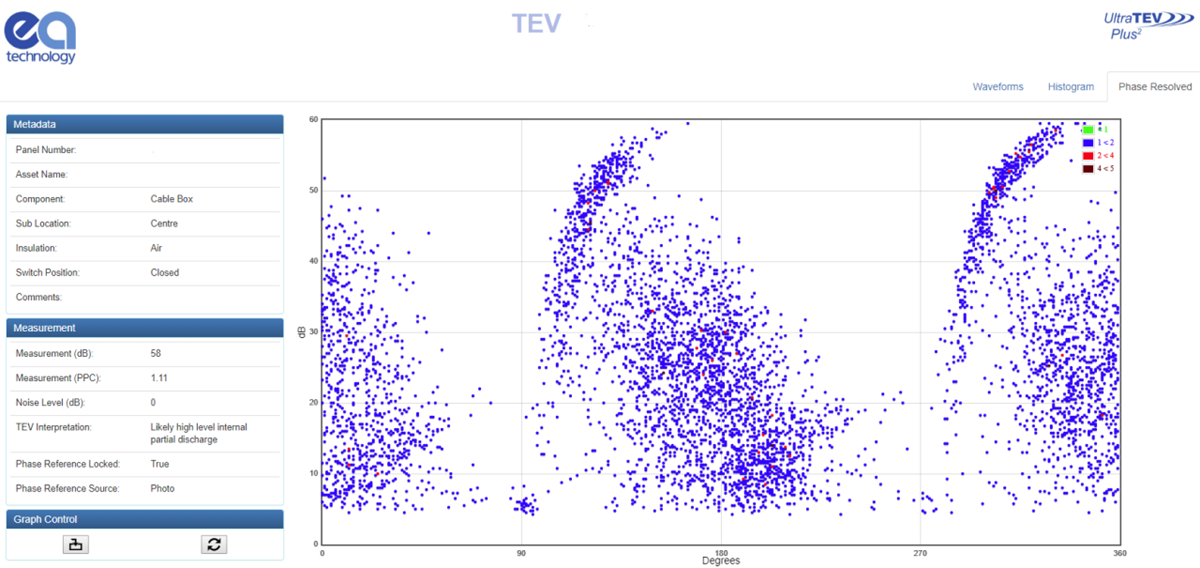What is a Partial Discharge Phase Plot telling you?
-
30 August 2019
-
Brad Monaghan

A phase plot is critical to understand partial discharge in high voltage (HV) insulation systems. In this article I’m going to literally connect the dots to explain how they are created and how they’re used.
Firstly, what is a phase plot (also known as phase resolved partial discharge (PRPD) pattern)?
A PRPD pattern is a visual representation of partial discharge (PD) activity relative to the 360 degrees of an AC cycle. PD activity will be caused by some sort of defect within, or on the surface of, a high voltage (HV) insulation system. Defects can include voids, gaps, splits, physical sharp points, imperfections etc on/within HV assets. The defect itself discharges as it is not able to insulate the voltage applied across it.
The above example is caused by an ‘internal void’ defect within a current transformer where the cast resin insulation system contains a gap – sparks are constantly jumping across that gap. Each ‘dot’ within the visual pattern is an event (in this instance a spark) which was caused by the discharging defect.
How to interpret a PRPD pattern
The PRPD plot shows the amplitude of each discharge event (y-axis) plotted against their phase angle (x-axis). In this instance the amplitude is measured in dBmV using a Transient Earth Voltage (TEV) sensor and 10 seconds of activity is displayed relative to the 50Hz system frequency.
As the primary voltage on a power system rises and falls over time, the voltage applied across each defect also rises and falls over time – causing the defect to discharge only at certain times and amplitudes. This is what creates the PRPD pattern.
Each PRPD pattern will be unique as each discharging defect will be slightly different to one another as the physical defect will be of a certain type and certain physical shape. Although each pattern is unique, common trends can be seen for each defect type.
Common defect types
These defect types include corona, internal void, poor contact, floating metal work etc. The severity of discharge, single phase / two phase / three phase activity, phase to phase activity can also be determined from the PRPD patterns.
In my role as Senior Technician at EA Technology, PRPD patterns are the most useful tool in analysing and diagnosing PD activity within HV insulation systems.
